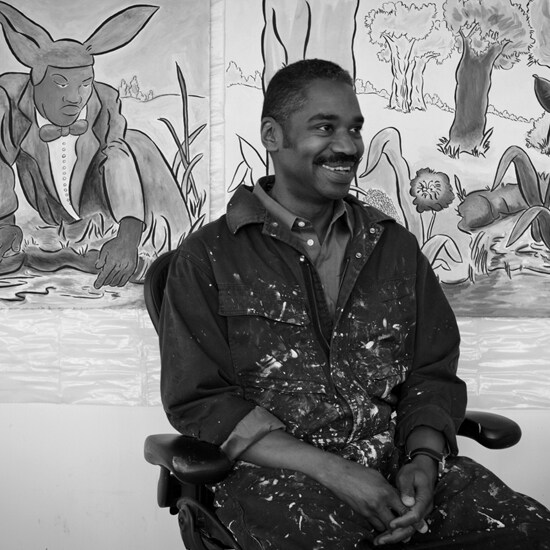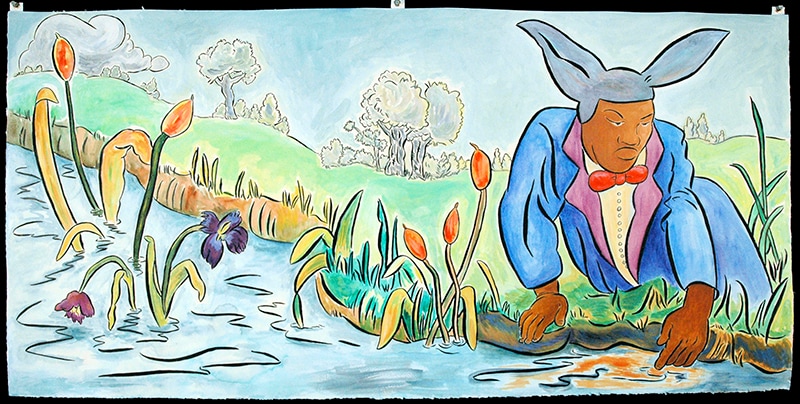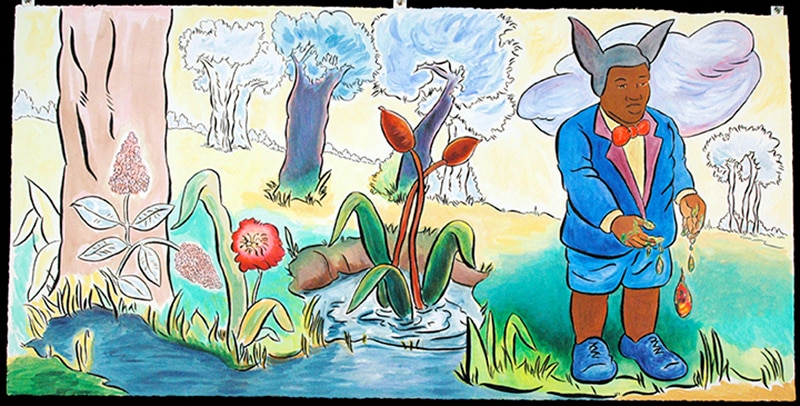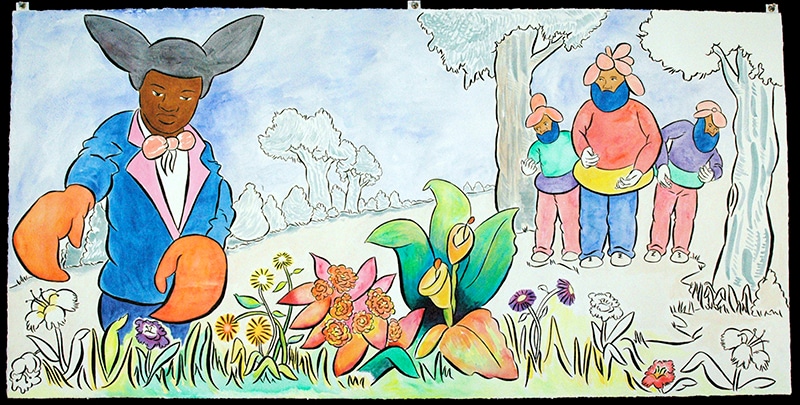John Bankston

John Bankston is a self-declared storyteller and visual novelist, whose work is particularly relevant and adaptable to the handwashing theme. Based in San Francisco and trained as a painter, Bankston began to use the visual structures of children’s coloring books in the early 2000s to create fantastical stories exploring personal identities and inner worlds. Coloring books—whose bold black outlines of storybook characters, animals, etc. are commonly intended for eager children to color in as a participatory activity—offered him a visual trope from which to create imaginary landscapes and characters. Over the past decade, he has constructed a deeply personal iconography that continues to challenge him. On a formal basis, he has been able to use the structure of a coloring book page to meld his interest in the interaction between the linear and the painterly.
Bankston is particularly interested in constructing what he calls “sustained narratives” using visuals, not texts, to create content. He often sends his imaginary characters, frequently human/animal hybrids, on journeys of transformation. These tales can seem childlike at first glance, but they very much mine more adult examinations of our relationships to the subconscious, as well as how we construct our personal identities. His references to popular culture, folk tales, fantasy literature, and African-American and African culture offer all of us entry points into his world regardless of our age, gender or ethnicity.
On a parallel track, public health has a long history of using storytelling in campaigns to encourage healthy habits and to influence behavior change. There is much evidence to the support the effectiveness of using popular culture tools, including illustrated stories, comic books, plays, music videos, radio shows, and posters, to speak directly to target audiences and to influence behavior in areas such as eating well, exercising, and taking personal responsibility.
John Bankston is first and foremost an artist, neither an illustrator nor health communicator. Yet, Bankston’s instructive parable Magic Handwashing very much falls in the tradition of the best of public health storytelling. Once again, Bankston has created an imaginary world called the Rainbow Forest. His protagonist, Donkey Boy, finds himself in dilemma when his hands are turned into claws after immersing them into a glowing puddle. Only through the help of many fantastical friends does Donkey Boy restore his hands when he learns how to wash his hands properly. His story is meant to create visual permanent memories to be recalled during our daily handwashing rituals.


